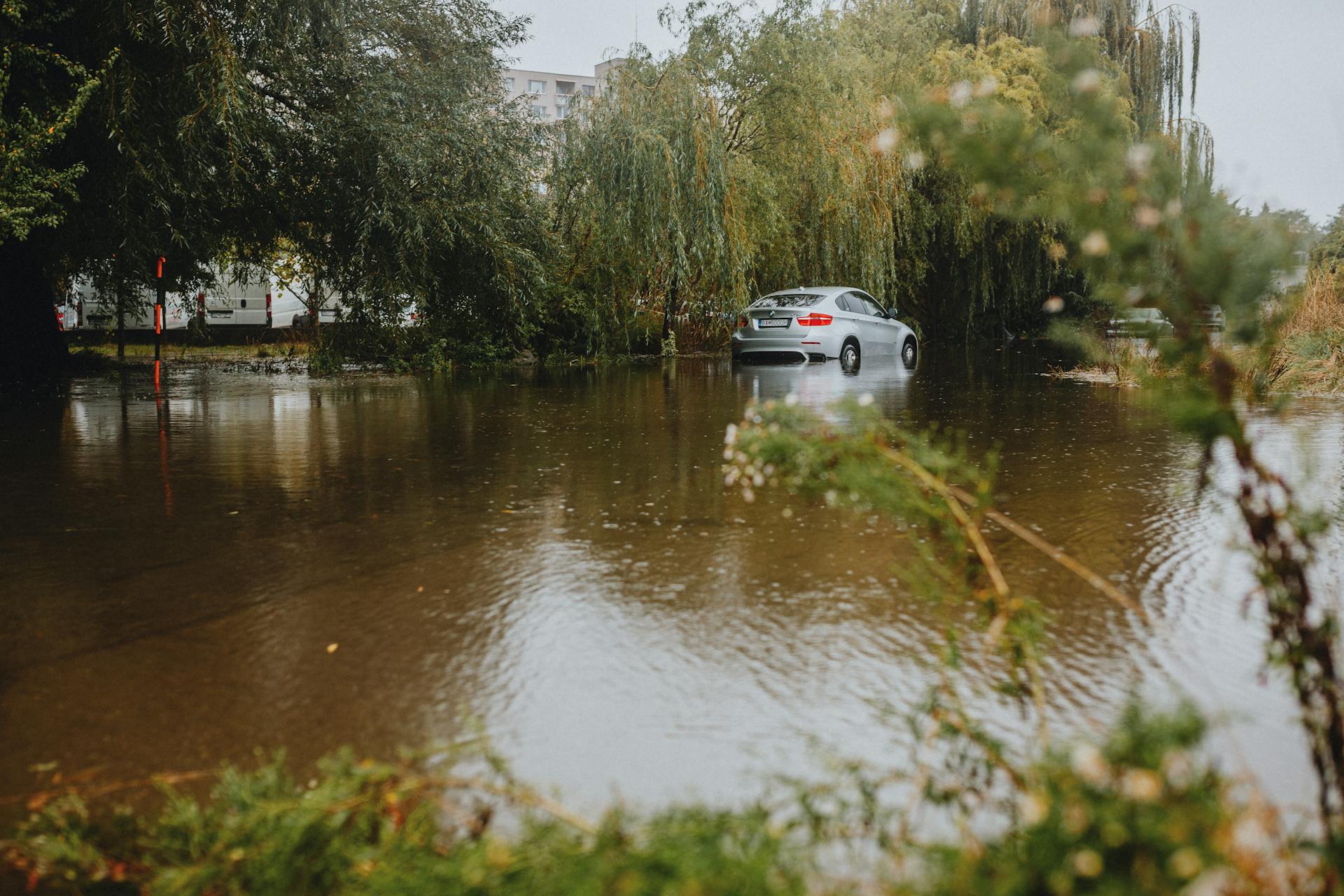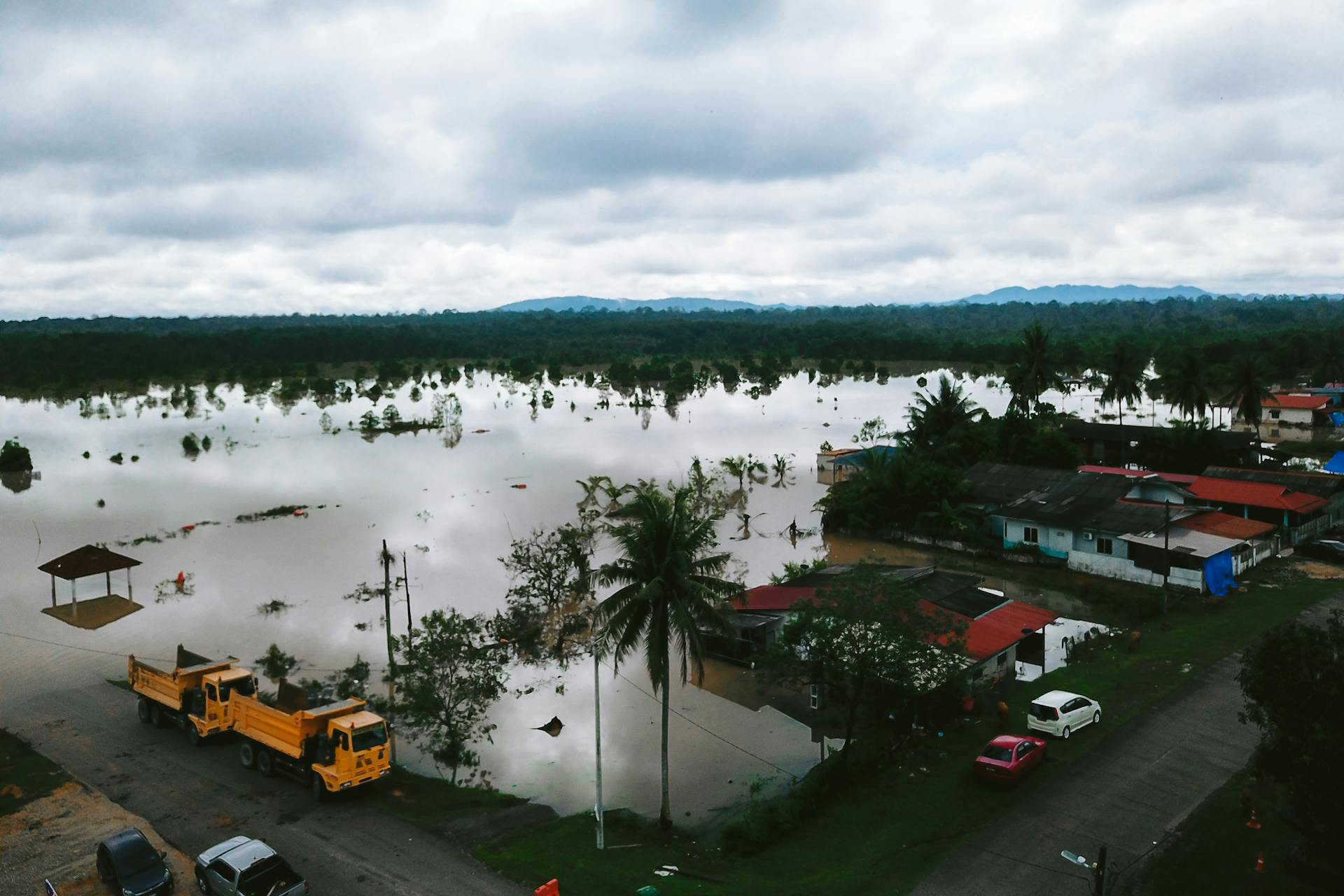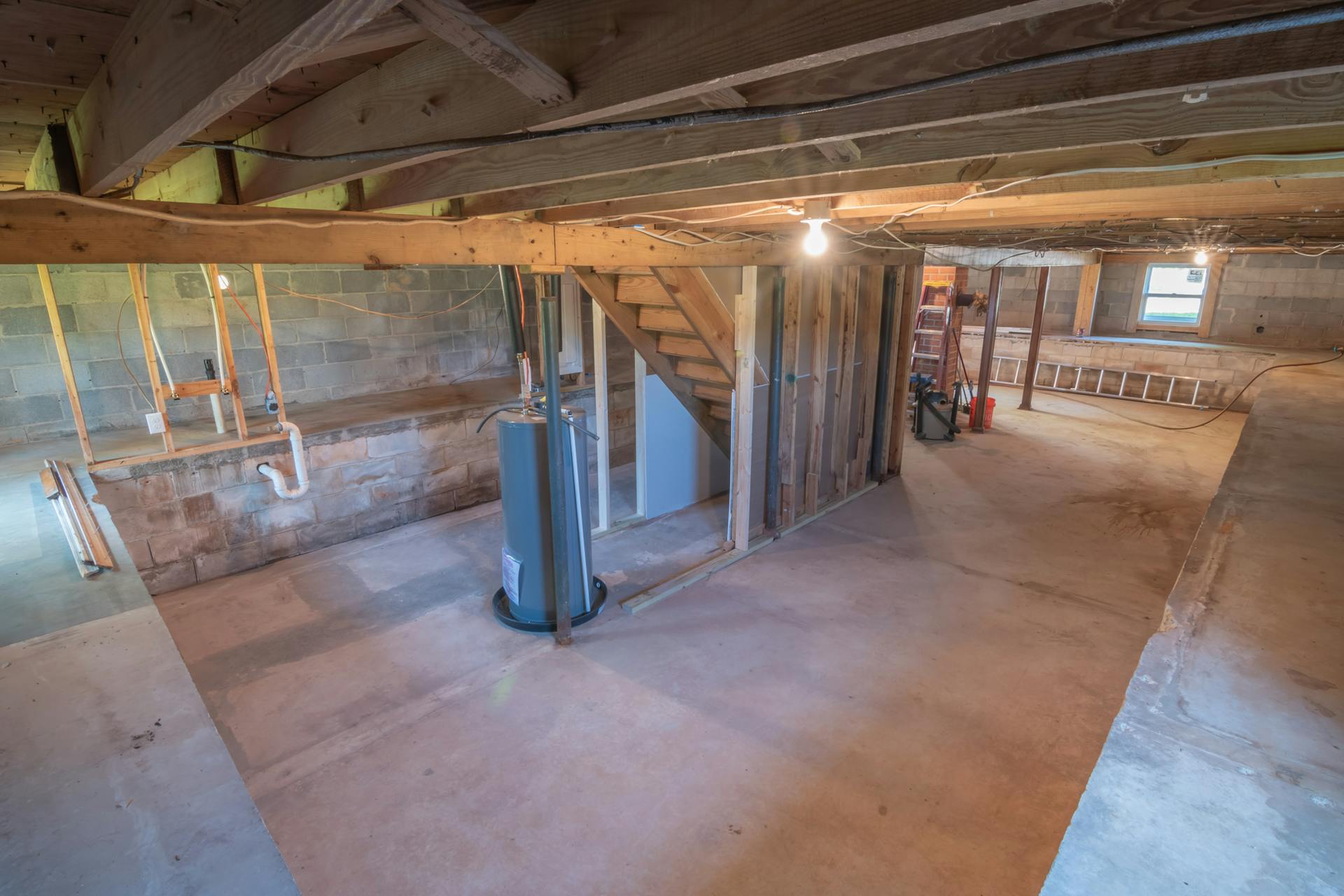
If your basement flooding insurance claim is being denied, it can be frustrating and overwhelming. This process can be complex and time-consuming, but understanding it can help you navigate it more effectively.
The insurance company will typically review your claim to determine if it meets the policy's conditions. They may request additional information or documentation, such as photos or witness statements, to support your claim.
The denial of your claim may be due to various reasons, including the cause of the flood, the timing of the flood, or the amount of damage. For example, if the flood was caused by a sewer backup, which is often excluded from standard policies, your claim may be denied.
You have the right to appeal the insurance company's decision, and it's essential to do so in a timely manner.
Understanding Insurance Denials
If your basement flooding insurance claim has been denied, it's essential to understand why. Insurance companies often deny claims due to lack of maintenance, which means failing to take preventative measures to mitigate damage.
Regular inspections, proactive measures like moving furniture and turning off water valves, and other precautionary steps can help prevent damage and increase the chances of a successful claim. However, if you don't take these steps, your insurance company may deny your claim.
Policy exclusions are another common reason for denial. Insurance policies come with terms and conditions, and some water damage incidents may not be included. Examples of uncovered incidents include flooding from rivers or coastal waters, intentional acts of vandalism, or issues caused by pre-existing damage.
You should always read the fine print of your policy to ensure that your plan doesn't have these exclusions. Failing to do so can lead to unexpected denials.
Late reporting is also a common reason for denial. As soon as you notice damage, you should file a claim with your insurance company. Water damage insurance claims must be filed within a specific time frame, and if you fail to report within those set dates, your claim will likely be denied.
If your claim is denied due to insufficient documentation, it's essential to review the evidence provided. Insurance agents rely on photographs, videos, and repair estimates to assess your claim. If you notice that some of these elements are missing, that may be the reason your claim was denied.
Here are some common reasons for basement flooding insurance claim denials:
- Lack of Maintenance
- Policy Exclusions
- Late Reporting
- Insufficient Documentation
Reasons for Denial
Insurance companies often deny basement flooding claims due to lack of maintenance. This means if you haven't regularly inspected your basement for problems or taken preventative measures to mitigate damage, your claim might be denied.
Policy exclusions are another common reason for denial. Your insurance policy may not cover water damage from flooding caused by rivers or coastal waters, intentional acts of vandalism, or pre-existing damage.
Your claim can also be denied if you fail to report the damage within the specified time frame. Insurance companies require timely reporting to assess your claim effectively.
Some common reasons for denial include:
Water Damage vs Flood Damage
Water damage and flood damage may seem like the same thing, but they're actually covered differently under insurance policies.
Water damage is typically caused by a sudden event, such as a broken appliance or burst plumbing, and is covered by standard insurance policies.
However, flood damage is a different story. It's caused by natural disasters like hurricanes, tsunamis, and overflowing rivers, and isn't covered by standard property insurance policies.
Recommended read: How Long to Keep Homeowners Insurance Policies
To have coverage for flood damages, you need a separate flood policy, and the only source for flood coverage is usually the National Flood Insurance Program (NFIP).
The Federal Emergency Management Agency (FEMA) defines a flood as a general or temporary condition of 2 or more acres of normally dry land area, caused by an overflow of water.
Understanding the difference between water damage and flood damage is crucial when filing a claim, as it can significantly impact the outcome.
Curious to learn more? Check out: How to File a Home Insurance Claim for Water Damage
Localized Overflow
Localized overflow can be a tricky situation, and it's essential to understand how your insurance policy handles it.
Homeowners insurance typically provides coverage for localized overflow, such as a bathtub or sink overflowing, as long as it's a sudden and accidental event.
However, if your insurer can show that the flood was the result of a continuing maintenance problem, your claim could be denied.
If your toilet habitually overflows because of a blockage that you haven't fixed, you may not receive a payout.
Some home policies exclude this type of scenario from coverage, so it's best to review your policy and talk with your insurance agent to determine what kind of overflows are covered in your home insurance.
Don't assume that all insurance companies cover localized overflow the same way, so shop around and ask for quotes to compare coverage types and costs.
Maintenance or Neglect
Maintenance or neglect can lead to denied insurance claims. This is because insurance policies typically don't cover damage caused by the homeowner's lack of maintenance or care for their property.
Regular maintenance of your property is essential to prevent water damage. Items to regularly maintain in your home include hot water heaters, heating equipment, A/C drain lines, indoor and outdoor pipes and faucets, appliance hoses, showers, tubs, sinks, toilets, windows, doors, roofs, sewer drains, rain gutters & downspouts, and sump pumps.
Failure to maintain your property can result in denied claims. If your insurer can prove that you were negligent in caring for your home and its belongings and that your lack of care caused the flood, your claim might be denied.
Examples of neglect include leaving your home unheated during winter, causing pipes to freeze and burst. This type of damage is not covered by homeowners insurance.
Here's an interesting read: Assurant Property
Types of Coverage
Flood insurance is a separate policy that can be purchased through the NFIP or a private insurer, and it's usually required by mortgage companies if your home is in a flood zone.
You can also consider adding water backup coverage to your primary homeowners policy, which covers water damage caused by a drain or sump pump backup.
Service line coverage is an endorsement that covers utility pipes, like water and sewer lines, if they cause damage to your home.
If you store personal items in your basement, you might want to add contents replacement cost coverage to your home insurance policy to ensure you're not left with out-of-pocket costs if basement flooding damages your belongings.
Here are some types of coverage to consider:
- Flood insurance
- Water backup coverage
- Service line coverage
- Contents replacement cost coverage
- Equipment breakdown coverage
What Types of Coverage?
When it comes to protecting your home from water damage, there are several types of coverage you should consider.
Flood insurance is a separate policy that can be purchased through the NFIP or a private insurer. This is a must-have if you live in a flood zone, have repeated problems with flooding, or feel your property is at risk.
Water backup coverage is an optional addition to your primary homeowners policy that covers water damage caused by a drain or sump pump backup. This can be a lifesaver if you have a history of backups.
Service line coverage is an endorsement that covers utility pipes, like water and sewer lines, if they cause damage to your home. This is especially beneficial if you have a history of utility line damage.
Contents replacement cost coverage is an endorsement that covers the cost of replacing personal items in your basement if they are damaged in a flood. Without this coverage, you might be left with out-of-pocket costs.
Equipment breakdown coverage pays to repair or replace home appliances and systems if they malfunction, unrelated to a covered peril. This can be useful if you have expensive appliances in your basement.
Here are some common types of coverage to consider:
- Flood insurance
- Water backup coverage
- Service line coverage
- Contents replacement cost coverage
- Equipment breakdown coverage
Free Property Insurance Claims Guide
If you're concerned about water damage or flooding in your home, you can explore various coverage types through your homeowners insurance policy. Flood insurance, for example, is a separate policy usually offered through the NFIP or private insurers, and it may be required by your mortgage company if you live in a flood zone.
Readers also liked: Life Insurance Policy Denial
Regular maintenance of your property and equipment can help avoid water claims. This includes tasks like checking your hot water heaters and heating equipment, as well as inspecting your indoor and outdoor pipes and faucets. You should also ensure that your appliance hoses, showers, tubs, sinks, toilets, windows, doors, roofs, sewer drains, rain gutters, and downspouts are in good condition.
To manage your insurance claim like a pro, download our free Experts Guide to Property Insurance Claims. This resource will provide you with valuable information on how to navigate the process.
Intriguing read: Personal Property Insurance Claim
Mitigating Risk
Proper grading around the foundation is crucial to direct water away and prevent pooling. This simple step can significantly reduce the risk of basement flooding.
Ensuring proper grading is just one of the proactive measures homeowners can take. Installing and maintaining a functional sump pump system to remove excess water is another key step.
Sealing cracks in the foundation walls to prevent water seepage is also essential. Directing gutter downspouts away from the foundation and extending them to ensure proper drainage is also a good idea.
Here are some key steps to reduce basement flood risk:
- Ensure proper grading around the foundation.
- Install and maintain a functional sump pump system.
- Seal cracks in the foundation walls.
- Direct gutter downspouts away from the foundation.
- Consider installing a backwater valve.
Mitigating Basement Flood Risk
Proper grading around the foundation is crucial to direct water away and prevent pooling.
If you notice water pooling around your foundation, it's likely a sign that your grading needs attention. I've seen it happen to friends who didn't take care of this issue, and it's a costly mistake to make.
Sealing cracks in the foundation walls is a simple but effective way to prevent water seepage.
A single crack can let in enough water to cause significant damage over time. Be sure to inspect your foundation regularly for any signs of cracks.
Directing gutter downspouts away from the foundation is essential for proper drainage.
Make sure to extend your downspouts to prevent water from accumulating around your foundation. This is a common mistake that can lead to flooding.
A functional sump pump system is a must-have to remove excess water from your basement.
Don't rely on a faulty sump pump to keep your basement dry. Regular maintenance is key to ensuring it works properly.
Worth a look: Flooded Basement Insurance Claim
Consider installing a backwater valve to prevent sewage backup during heavy rainfall.
This is a crucial step for homes with a history of sewage backups. It's not worth the risk of costly repairs and property damage.
Here are the key steps to reduce basement flood risk:
- Ensure proper grading around the foundation to direct water away and prevent pooling.
- Install and maintain a functional sump pump system to remove excess water.
- Seal cracks in the foundation walls to prevent water seepage.
- Direct gutter downspouts away from the foundation and extend them to ensure proper drainage.
- Consider installing a backwater valve to prevent sewage backup during heavy rainfall.
Precautions During Severe Weather
Severe weather can be unpredictable and devastating, but there are steps you can take to prepare and mitigate the damage. Flooding is a huge problem in Texas, and flash flooding from heavy thunderstorms and hurricanes can wreak havoc on your property.
To prepare your home, consider the unpredictability of storms and the potential for inevitable damage. Save Dry Force's phone number, so you know who to call immediately after disaster strikes.
Having a plan in place can make a big difference. Dry Force offers 24/7, 365-day-a-year emergency storm cleanup services, with 60-minute or less response times.
If you're expecting a severe storm, take the time to prepare your home and basement before it hits. This could include securing loose outdoor items, trimming trees, and clearing drains.
A unique perspective: Does Renters Insurance Cover Basement Flooding
Here are some key services to look for in an emergency cleanup and restoration company:
- 24/7 emergency storm cleanup services
- 60-minute or less response times
- Direct billing to your insurance company
- Certified technicians who are reliable, drug-tested, and background-checked
By being prepared and knowing who to call, you can reduce the stress and financial burden of severe weather.
Sources
- https://www.adjustersinternational.com/resources/news-and-events/water-damage-to-my-property-will-my-claim-be-accepted-or-denied/
- https://www.bankrate.com/insurance/homeowners-insurance/basement-flood-insurance/
- https://wdblegal.com/2024/04/5-common-reasons-why-state-farm-denies-water-damage-claims/
- https://dryforcecorp.com/what-to-do-when-your-basement-flooding-insurance-claim-being-denied/
- https://www.millerpublicadjusters.com/free-property-insurance-claim-advice-blog/what-to-do-when-your-property-flooding-claim-is-denied
Featured Images: pexels.com


